Business
/ArcaMax

Ecolab makes $1.8B deal to help expand its business with AI data centers, semiconductor industry
Ecolab is spending $1.8 billion for a high-tech business that purifies water for data centers and semiconductor operations.
The St. Paul, Minnesota-based company’s deal is for Montreal-based Ovivo Inc.’s electronics division, which has about $500 million in annual revenue and 900 employees.
“Ovivo Electronics’ unique technologies ...Read more

California's burger wars heat up as Habit Burger & Grill trolls In-N-Out with new billboard
Habit Burger & Grill has doubled down on its provocative marketing strategy, updating its billboard trolling of burger giant In-N-Out for a second consecutive year after once again beating the chain in a national ranking.
Habit has updated its existing billboard near Los Angeles International Airport, directly across from an In-N-Out location ...Read more
Block, formerly Square, lays off about two dozen more in Missouri
ST. LOUIS — The financial services firm Block, Inc., formerly known as Square Inc., will lay off 23 Missouri workers. These cuts come months after the company let go of 67 workers throughout the state.
According to a notice filed with the state Wednesday, the 23 affected positions include 19 remote customer support specialists and four remote...Read more

Priscilla Presley faces $50 million LA lawsuit from former business partner
The bitter legal feud between Priscilla Presley and her former business partner escalated this week.
Brigitte Kruse, the founder of Agoura Hills-based GWS Auctions Inc. and her business associate Kevin Fialko, on Monday filed a new fraud and breach of contract suit against Presley in Los Angeles Superior Court.
The suit alleges that Elvis' ex-...Read more
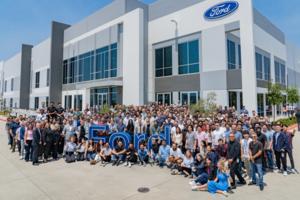
Ford's next 'Model T moment' started in California
LOUISVILLE, Kentucky — A small team of Ford Motor Co. engineers in California launched work three years ago to develop an electric vehicle platform and production system that the Dearborn, Michigan-based automaker says will be as radical as the Model T. But executives insist that doesn't mean Michigan is being left behind.
"We're taking the ...Read more
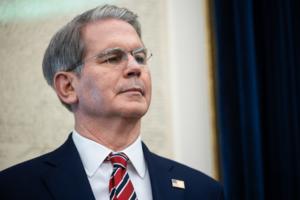
Bessent sees Nvidia, AMD China agreements as a model for others
Treasury Secretary Scott Bessent said the recent deal to allow Nvidia Corp. and Advanced Micro Devices Inc. to resume lower-end AI chip sales to China, on the condition they give the U.S. government a 15% cut of the related revenue, could serve as a model for others.
“I think we could see it in other industries over time,” Bessent said ...Read more

A new gold rush? How AI is transforming San Francisco
On a sunny day in San Francisco, along the city's waterfront, families dived into the wacky world of artificial intelligence inside the Exploratorium museum.
Visitors made shadow puppets for AI to identify, used AI to generate songs, asked chatbots questions and faced off with AI in a game in which players tried to draw images that only humans ...Read more

How these sellers of Swiss watches are coping with Trump's highest tariffs
PHILADELPHIA — Switzerland is used to being alone. It’s not a member of NATO or the European Union; it eschews the euro in favor of its own currency, the Swiss franc, which has lately gained value against the euro and the dollar.
But Switzerland’s solitude has left it isolated by President Donald Trump’s import taxes. The multilingual ...Read more

Trump's unusual deal with Nvidia and AMD sparks concerns, legal questions
President Trump struck an unusual deal with Nvidia and Advanced Micro Devices that allows the companies to sell certain chips to China in exchange for giving the U.S. government a 15% cut of those sales.
But the unprecedented agreement also has raised concerns from politicians and legal experts over whether the deal is legal and would pose a ...Read more
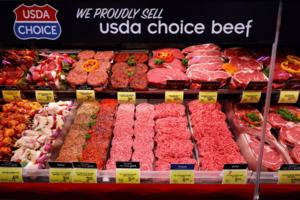
US consumers face possibility of higher beef prices in 2026
American beef lovers may face even leaner plates and higher prices next year as US production shrinks to a decade low and tariffs limit imports, according to a US government projection.
Total beef supply in the US is expected to drop 2.5% in 2026 to 31.1 billion pounds — the lowest since 2019 — the US Department of Agriculture said in a ...Read more
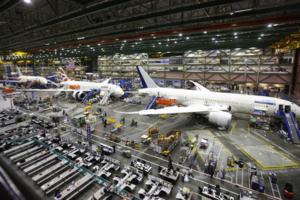
Boeing plane deliveries dipped in July as company recovery rolls on
Boeing delivered 48 planes in July, including 37 of its popular 737 Maxes, the company said in its monthly recap of orders and deliveries Tuesday.
That’s a dip from June — when Boeing reported 60 deliveries, including 42 Max planes — but in line with the company’s output for the earlier months of the year.
Between January and May, ...Read more

Las Vegas funeral home shut down for failing to cremate bodies: 'The smell was straight up death'
A Las Vegas funeral home has been shut down after a regulatory board found that it was failing to cremate bodies for extended periods and failing to file death records in a timely manner.
The Nevada State Board of Funeral & Cemetery Services revoked the license of McDermott’s Funeral Home and Cremation Services last week after alleging that ...Read more

San Diego's inflation rate is highest in nation at 4%
San Diego’s inflation rate was 4% in July — fueled primarily by rising prices for food, medical care and cars — making it highest in the nation.
Inflation has typically run hotter in San Diego than much of the U.S. because of high housing and gasoline costs. Yet the past few reports, which are released every two months for metro areas, ...Read more

Inflation stayed steady last month as Trump's tariffs hit some prices -- here's what might feel most expensive
Inflation didn’t improve last month, suggesting that businesses may be starting to pass along higher costs from tariffs onto the prices that you see on store shelves.
Consumer prices rose 0.2% between June and July, according to the Bureau of Labor Statistics (BLS)’ latest monthly consumer price index (CPI) report. Excluding food and energy...Read more

US core CPI picks up on services; goods inflation more subdued
Underlying U.S. inflation accelerated in July though the cost of tariff-exposed goods didn’t rise as much as feared, boosting expectations that Federal Reserve officials will lower interest rates when they meet next month.
The core consumer price index, which excludes the often volatile food and energy categories, increased 0.3% from June, ...Read more

US core CPI picks up on services; goods inflation more subdued
Underlying U.S. inflation accelerated in July by the most since the start of the year, though a tepid rise in the costs of goods tempered concerns about tariff-driven price pressures.
The core consumer price index, which excludes the often volatile food and energy categories, increased 0.3% from June, according to Bureau of Labor Statistics ...Read more

Spirit Airlines issues warning about its future. Will company stay in business?
Spirit Airlines on Monday warned investors and passengers that it may no longer be in business in a year even after a successful bankruptcy restructuring and recent attempts to generate new sources of revenue.
The alert came in a 222-page financial statement the Broward company is required to submit every quarter to the U.S. Securities and ...Read more
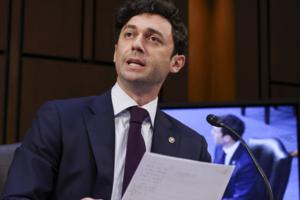
Ossoff urges Trump official to reinstate millions in Black-owned business funding
U.S. Sen. Jon Ossoff of Georgia is urging the Trump administration to reinstate millions in federal grant funding to the Urban League of Greater Atlanta for a program aimed at providing support and technical assistance to Atlanta’s Black entrepreneurs.
Ossoff, a Democrat, sent a letter to Commerce Secretary Howard Lutnick in early August ...Read more
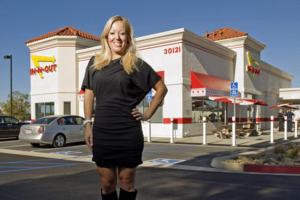
Why companies born and raised in California are leaving the state
Last month, billionaire In-N-Out owner Lynsi Snyder announced her move from California to Tennessee, where she plans to open new restaurants and continue raising her family.
It’s a dramatic shift for the leader of the beloved West Coast brand, which has become the latest company to signal its dissatisfaction with California in recent years. ...Read more

Rats! More than 100,000 acres of almond orchards across Central California are infested
Almond growers across Central California say they are battling a surging rat infestation across more than 100,000 acres of orchards, resulting in economic hardship and damage.
Across Fresno, Merced, Kings and Kern counties, almond farmers have reported an increase in rodent populations as the rodents use irrigation canals and other waterways ...Read more
Popular Stories
- US core CPI picks up on services; goods inflation more subdued
- US consumers face possibility of higher beef prices in 2026
- A new gold rush? How AI is transforming San Francisco
- How these sellers of Swiss watches are coping with Trump's highest tariffs
- Las Vegas funeral home shut down for failing to cremate bodies: 'The smell was straight up death'










